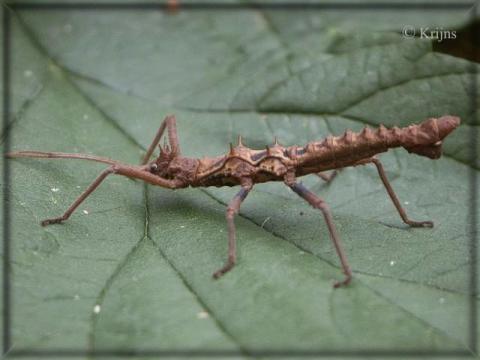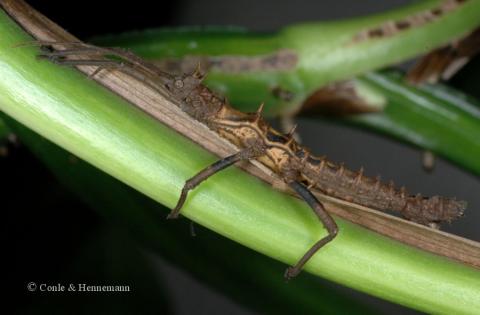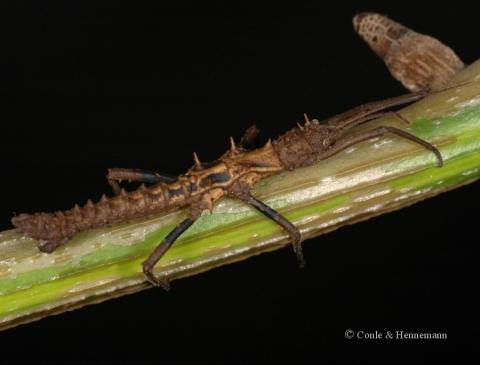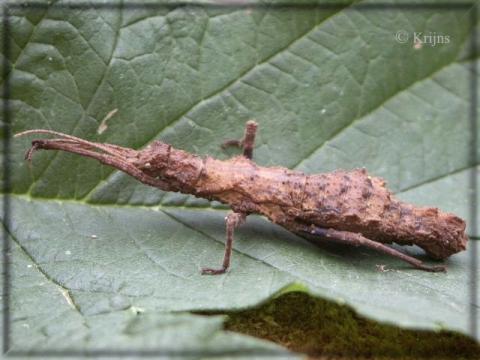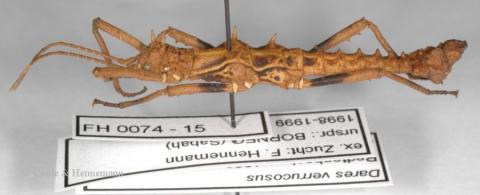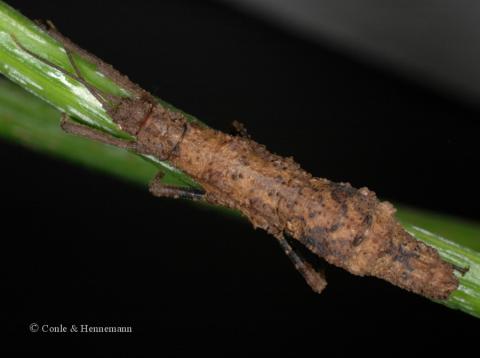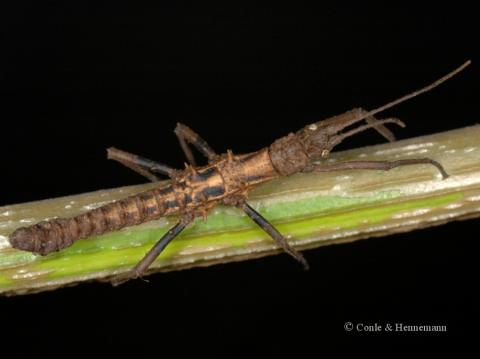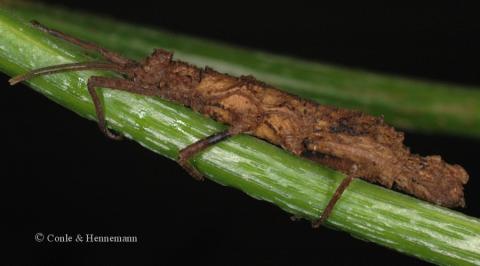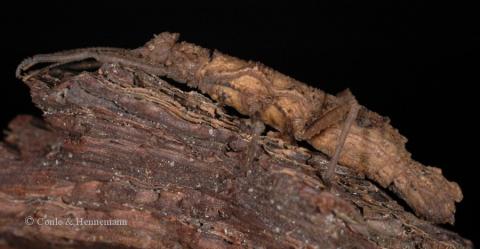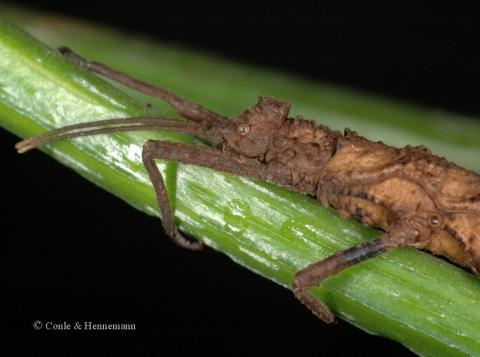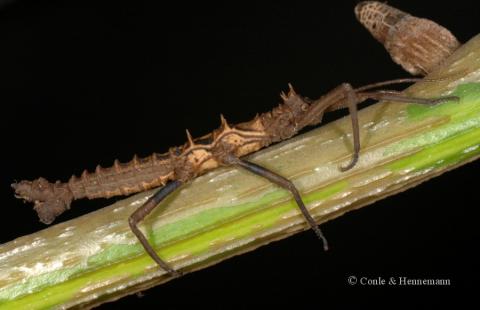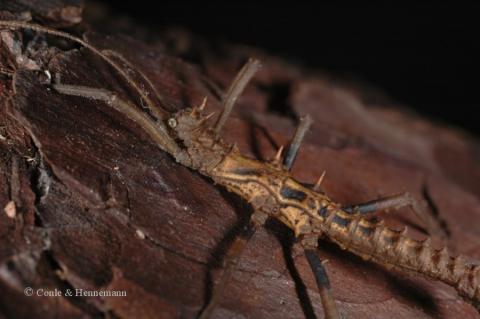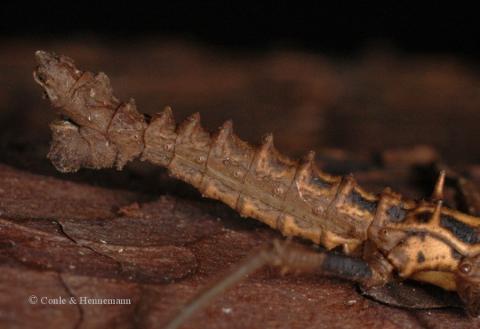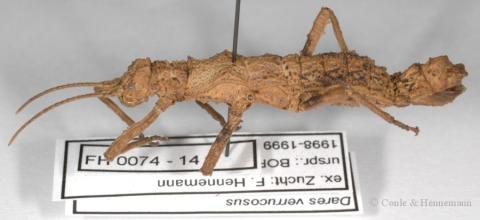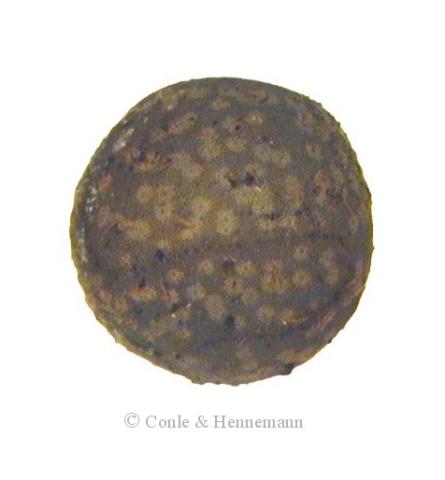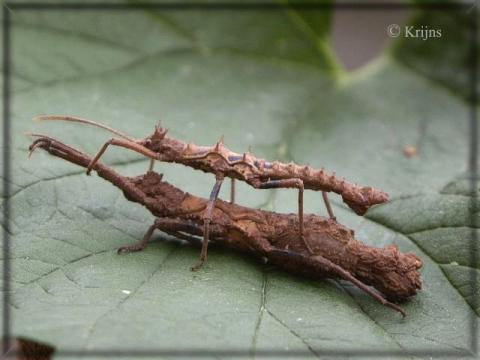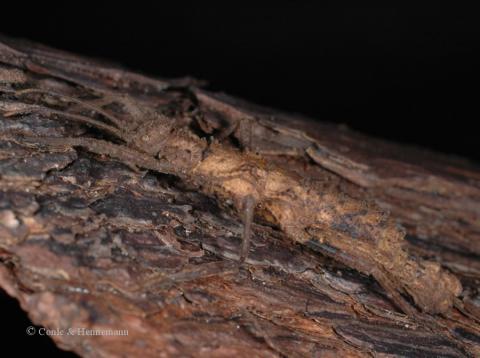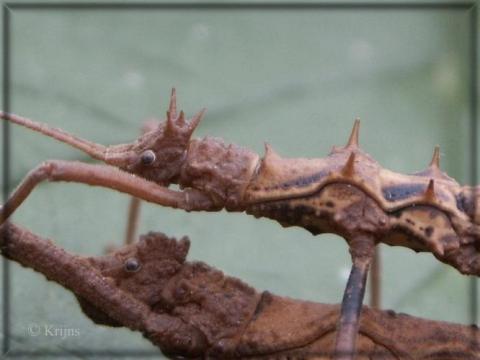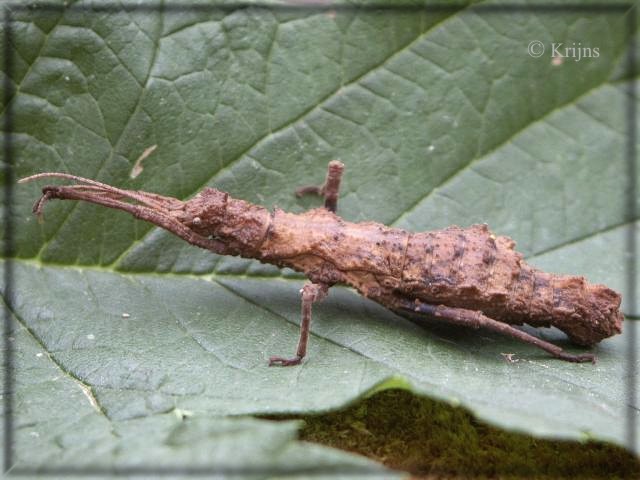
Genus
Species
Stock
CLP
30
PSG
69
Culture status
In culture
Foodplants
Bramble (Rubus spp.)
Hawthorn (Crataegus monogyna)
Firethorn (Pyracantha)
Strawberry (Fragaria sp.)
Hazel (Corylus avellana)
Oak (Quercus robur)
Beech (Fagus sylvatica)
Breeding notes
(by Holger Dräger, Germany)
General Notes
- no synonyms
- for some time (1935 to 1998) D. verrucosus has been seen as a synonym of Dares ulula (Westwood 1859)
- verrucosus means „warty“ or „tubercular“
_________________
Culture History
- has been in culture since 1984
_________________
Origin
- Sepilok near Sandakan (Sabah, Borneo)
_________________
Female
- small, very sturdy and compact phasmids
- about 4,0 to 4,5 cm
- dorsal side is tubercular and light to mid brown
- ventral side is beige to light brown coloured
- antenna consists of 25 segments, first segment (Scapus) flat, with 1 to 2 minute teeth outside
_________________
Male
- small, slim and spiny phasmids
- about 3,5 to 3,8 cm
- contrasty coloration
- basic colour usually beige with mainly blackish-brown patternings
- middle and hind femurs black
- head, meso- and metathorax with characteristic pairs of spines (dorsally)
- a pair of spiny extensions on each abdominal segment (exept the first abdominal segment)
- antenna consists of 23 segments
_________________
Nymphs
- color of older nymphs is often stronger and more contrasty than the adults
- regularly with a pair of white spots at the base of abdomen – which is typical for most Dares species
_________________
Eggs
- almost ball-shaped - 3,5 x 3,8 mm
- spotted
- dark grey to dark brown
- 0,3 mm long, creme-white, curved tiny hairs
_________________
Food Plants
- Bramble (Rubus spp.)
is well accepted by nymphs and adults. But in spring they do not like the fresh leaves. Therefore one should collect stems with leaves from the previous year - other Rosaceae - like hawthorn (Crataegus spp.), firethorn (Pyracantha spp.) und strawberry (Fragaria spp.)
- Betulaceae - like hazelnut (Corylus spp.)
- Fagaceae – like oak (Quercus spp.), beech (Fagus spp.)
_________________
Behaviour
- nymphs and adults let fall themselves if disturbed, and then remain motionless for some time
- while they remain motionless, frontlegs are streched out ahead, midlegshindlegs are bent and close to the body, and hindlegs are strecked out backwards
- females will lay 1 to 3 eggs per week
- females need a substrate in which they lay their eggs
- often they lay eggs also on other things in the cage like branches or bark - especially if their surface is craggy or covered by moss
_________________
Development
- incubation time at room temperatures (20-23°C) is about 3 to 5 months
- male will be adult after about 10 months, females after about 12 months
- females can live about 5 years
_________________
Breeding Notes
- easy to breed
- incubation on slightly humid substrate (sand, Vermiculite ect)
- breeding in very small cages with high humidity and some small ventilation openings is possible
- humidity can be kept high with a constantly wet paper towel on the ground or by carefully wetting the substrate
- nymphs and adults can be sprayed with water
- as an egg-laying substrate I use a humus-sand-mix (with some coconut fibres), which is covered by moss (Sphagnum sp.) to reduce the danger of going mouldy and to adjust the humidity easily
- eggs can be incubated on the substrate where they have been laid – or they can be collected and incubated seperatly
